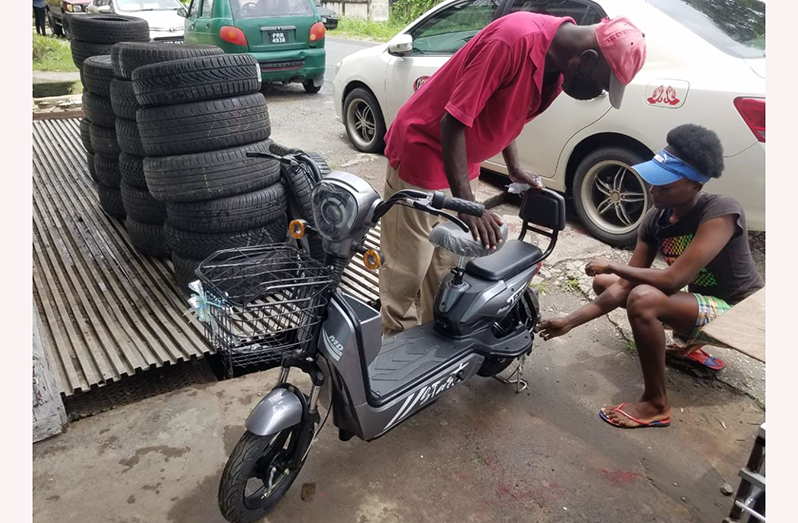ON any given day on a drive around, one might spot someone moseying along the side of the road on an electric bike, and those sightings are going to become even more frequent as the popularity of the bikes continues to grow. Retailing for between $70,000–$150,000, the bikes cost considerably less than the conventional motorcycles, and due to the ease with which they are operated, they are becoming the go-to mode of transportation for many. Egbert McCoy, 64, purchased his first electric bike on Tuesday from the Phillips E-Bike Shop at the corner of George and Durban Streets. “I was just curious and I need it for my grandchildren them. It easier to handle, and you don’t have to get helmet to traverse with it and you can carry it around easy,” he commented about his reason for getting on board with the electric bike. McCoy, who had never ridden an electric bike before, was planning to ride home with his new purchase. He believes his experience with riding a bicycle would be enough to help him learn to navigate the operations of the electric bike.
Co-owner of Phillips E-bike Shop, Melisa Phillips, said that McCoy would not be the first customer to simply purchase a bike and learn to properly operate it within minutes on the first go.
“It depends, because you just have to turn on the keys, rev the throttle; it don’t have no gear or nothing,” she explained.
The business has been retailing the bike for a few months now. Phillips averages that the business sells anywhere between 15 – 20 electric bikes per month. The bike McCoy bought has a maximum speed of 38kmph, and once fully charged, can go for five hours. When drained, the bike would take approximately six hours to recharge, Phillips said.
She said the ease of maintenance is also another reason the bike is fast becoming a hit with consumers.
“The battery does got to service every nine months; you got to water it. Persons could come back or they can do it themselves,” she explained.
Devon Stuart has also recently become involved in the business of selling the bikes and was encouraged to become a retailer given the growing demand for the bikes.
“To me, it’s just more comfortable,” he said as he described why he thinks the bikes are becoming as popular as they are.
How the operations of the bike are monitored, however, is not clearly understood. Because it is mechanically propelled, the bikes are legally classified as a motor vehicle. The bikes, however, do not come with a licence plate. Most of the users do not use a helmet and the riders rarely ever have a driver’s licence. The bikes also do not use motor vehicle road service licence or Certificate of Fitness for motor vehicle. For the most part, the riders are allowed to operate the bikes unhindered and appear to do so cautiously in the corner of the roadways, as most of the bikes have maximum speeds below 50kmph. Traffic Chief, Ramesh Ashram, explained that riders are not required to wear a helmet for bikes that are 49CC and below. The electric bikes do not come with an engine. Ashram noted that it is up to the Guyana Revenue Authority (GRA) to get the vehicles registered and to put in place a system of what requirements would be needed for the operations of the bikes. “They are mechanically propelled, so it’s a vehicle. It is up to GRA to create a registration, but these bikes do not have chassis and engine for them. They [GRA] have to make contact with the importers of the bikes and get them registered,” Ashram commented.








.png)







